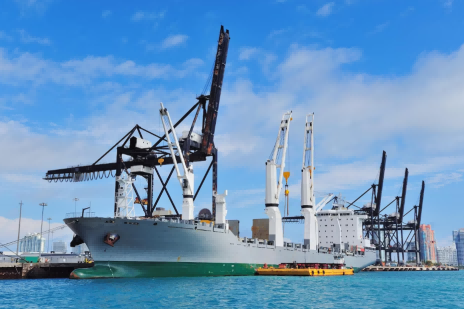 Trade Trends News
Trade Trends News
 14-07-2023
14-07-2023
· China's exports in June decreased by 12.4% year-on-year in terms of US dollars, a larger decline than the expected 9.5% decrease in a Reuters survey and the 7.5% decrease in May.
· Imports in June also dropped by 6.8% year-on-year, lower than the expected 4% decrease and the 4.5% decrease in May.

Due to the global economic downturn, Chinese policymakers are facing increasing pressure to adopt new stimulus measures. China's export decline last month marked the fastest pace since the outbreak of the COVID-19 pandemic three years ago.
The momentum of China's post-pandemic recovery, which had rebounded sharply in the first quarter, has slowed down. Analysts have now revised their economic forecasts for the remaining period of this year.
Data released by China's General Administration of Customs on Thursday showed that after a 7.5% decline in May, the outbound shipment value of the world's second-largest economy dropped by 12.4% year-on-year in June, below expectations. Imports contracted by 6.8%, surpassing the expected 4% decrease and the 4.5% decrease in the previous month.
Huang Zichun, an economist at Capital Economics, said, "The sluggish global demand will continue to put pressure on exports, which may further decline before hitting bottom towards the end of the year."
"But the good news is that the period of the most severe decline in foreign demand may be behind us," she added.
Customs spokesperson Lyu Daliang said at a press conference held in Beijing that the poor export performance was due to "the weak global economic recovery, slowing global trade and investment, as well as the rise of unilateralism, protectionism, and geopolitical tensions."
Amid escalating diplomatic tensions over chip technology and other issues, exports to the United States, the largest destination for Chinese goods, experienced the largest decline among its major trading partners, while exports to Russia saw a significant increase in the first half of this year.
With exports accounting for about one-fifth of the economy and the troubled real estate sector representing about one-third, China's prospects for a rapid recovery have become dim following the economic blow from the COVID-19-related lockdowns in 2022.
A Reuters poll showed that due to lockdowns in Shanghai and other major cities restraining output, China's economy is expected to grow by 7.3% year-on-year in the second quarter, with an estimated full-year growth of 5.5%. The National Bureau of Statistics will release second-quarter GDP data next Monday.
After falling significantly short of last year's target, the government has set this year's GDP growth target at around 5%.
Xu Tianchen, a senior economist at the Economist Intelligence Unit, said, "Weak exports and deflationary pressures will intensify calls for stimulus policies, but I don't think the support will be large in scale."
"This is due to fiscal constraints on the government, which needs to borrow more money to finance larger expenditures," he added.
Growing Trade Divergence for China
The General Administration of Customs pointed out that China's trade divergence is becoming more pronounced, with trade performance with Southeast Asian economies and its Belt and Road partners outperforming that with the United States and the European Union.
China's top diplomat, Wang Yi, stated at an ASEAN foreign ministers' meeting held in Jakarta on Thursday that China and the Association of Southeast Asian Nations (ASEAN) are negotiating to deepen their free trade area partnership and fully implement the Regional Comprehensive Economic Partnership, a trade bloc supported by China and comprising Australia, Japan, South Korea, New Zealand, and the ten ASEAN countries.
Official data showed that China's trade with Belt and Road countries slowed to 9.8% in the first half of this year compared to the same period last year, down from 13.2% in the first five months of this year.
Thursday's official data also revealed that China's total trade with ASEAN in June amounted to $77.4 billion, surpassing the $68.8 billion trade with the EU and the $55.7 billion trade with the United States.
Huang Zichun, economist at Capital Economics, said, "But the good news is that the period of the most severe decline in foreign demand may be behind us."
"Developed economies still face recession, but the recession may be relatively mild, with limited impact on China's exports. Meanwhile, shipments of green technologies, including electric vehicles, batteries, and solar panels manufactured in China, may continue to grow rapidly, helping to drive export growth," Huang added.
Domestic Demand
Zhou Hao, economist at China International Capital Corporation, stated, "Looking ahead, external headwinds remain strong, and policy support is needed to boost domestic demand."
Chinese leaders have indicated that their policy support could be prudent and targeted. Last week, Premier Li Keqiang pledged to introduce targeted and coordinated policy measures in a timely manner to stabilize growth, ensure employment, and guard against risks.
Li also emphasized the importance of effectively combining policies at a critical time when China is experiencing economic recovery and industrial upgrading.
Later on Monday, the People's Bank of China and the China Banking and Insurance Regulatory Commission issued a joint statement stating that they are expanding loan relief for some property developers, emphasizing their goal of ensuring that homes under construction can be delivered.
Official data released on Monday showed that China's producer price index fell for the ninth consecutive month in June, while the consumer price index remained unchanged, indicating that the Chinese economy is on the edge of deflation, posing significant challenges for recovering demand and revitalizing growth.
Category
Leave Message for Demo Request or Questions


 T-info
T-info T-discovery
T-discovery

 My
Tendata
My
Tendata Market Analysis
Market Analysis Customer
Development
Customer
Development Competitor
Monitoring
Competitor
Monitoring Customer Relationship
Customer Relationship





































































































































